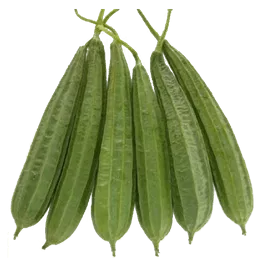All about microgreen
Microgreens are a new nutrition mantra spreading like fire among people all over the world. And why not! they deserve this attention as they are the superfoods packed with multiple health benefits. Today Nutrition is the most compromised part of our consumption pattern and lifestyle which ultimately becomes the core reason for diseases and health issues. So, to boost immunity that is at par with today’s requirement, microgreens can be trusted. They are tiny miracles that are, healthier, tastier and affordable. Let us know more about microgreens!
What are microgreens?
Microgreens are a tender form of green leafy vegetables, herbs and pulses of approximately 1-3 inches, which are harvested immediately after sprouting. They are a stage of seed development where tiny plants are smaller than baby greens but bigger than sprouts. They are a great source of minerals and vitamins and grow within 10-14 days. Microgreens are closest to their natural living state that one must try to add to their daily food habits.
Types of microgreens:
The popular types include microgreens of radish, carrot, spinach, fenugreek, fennel, dill, cabbage, cauliflower, beetroot, celery, garlic, onion, cucumber, sunflower, amaranth, pea shoots, parsley, moong etc. Almost edible variety of every plant family can be the source of microgreens.
Why do we need to add microgreens to our diet?
The growing micronutrients deficiency and lack of a balanced diet impact our physical and mental health. The pandemic reality is another threat that humanity has to cope with. So, microgreens in a small amount can overcome the micronutrients deficiency and add life to our foods.
Benefits Of Microgreens:
- Microgreens are packed with antioxidants.
- They are 40 times more nutritious than fully grown vegetables.
- They can lower the risk of many diseases such as heart disease, diabetes, cancer etc.
How to add microgreens to our diet?
Microgreens can be used as a main vegetable or for garnishing. The best way to consume includes:
- Add them to salads, soups, sandwiches, burgers or omelettes.
- Blend them in chutney, juices, smoothies, dips or raitas.
- Sprinkle them on your sabzees and dal
- Add them to detox water.
- Garnish in soup, pasta or noodles.
- Mix them to the dough when making rotis or bread.
How much quantity of Microgreen can be taken per day?
Just 50 grams of microgreens in an everyday diet is enough to improve immunity and lifestyle.
Storage of Microgreens
The best way to consume microgreens is within 3-4 hours of clipping. You can also wrap them in between damp paper towels and store it in the fridge for 10days.
Contribution of Pureroot
Pureroot is providing fresh microgreens which are homegrown, sun-kissed and hygienically handled. All microgreen seeds are organic and of the best quality. They are grown under expert guidance and every process from growing to packaging is supervised. Pureroot is providing the best affordable microgreens to our customers.













